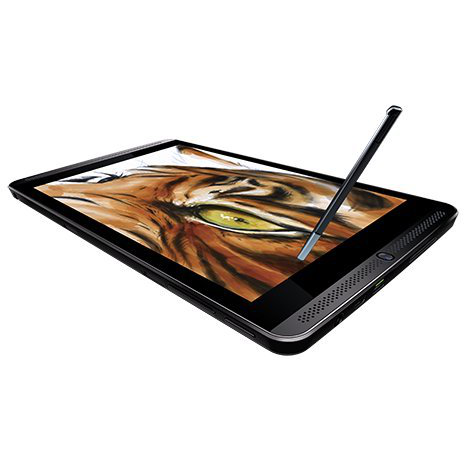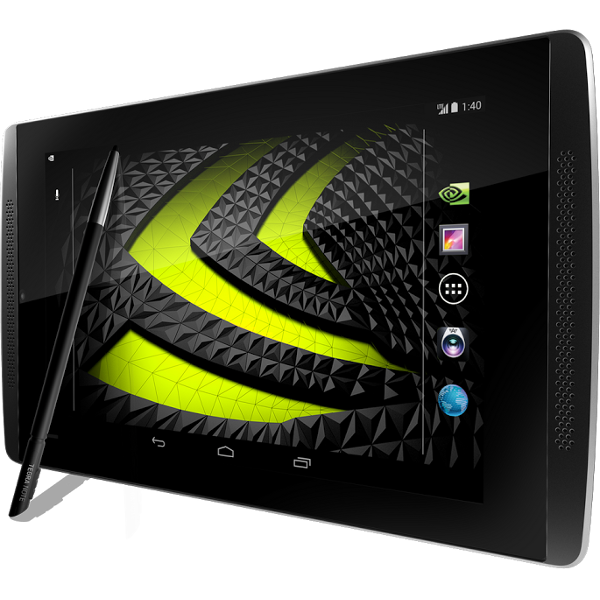Nvidia Shield Tablet And Shield Controller Review
The Shield Tablet, powered by Nvidia’s Tegra K1 SoC, deftly handles browsing and media playback duties. Combining it with the wireless Shield Controller transforms the 8-inch device into an exciting mobile gaming platform.
Benchmark Suite, Methodology And System Specs
Benchmark Suite
Our current Android test line-up comprises six key sections: CPU, Web, GPU, GPGPU, Display and Battery.
| HTML5 And JavaScript Benchmarks | JSBench, Peacekeeper 2.0, WebXPRT 2013 |
|---|---|
| CPU Core Benchmarks | AnTuTu X (Anti-Detection), Basemark OS II Full (Anti-Detection), Geekbench 3 Pro (Anti-Detection), MobileXPRT 2013 |
| GPU Core Benchmarks | 3DMark (Anti-Detection), Basemark X 1.1 Full (Anti-Detection), GFXBench 3.0 Corporate |
| GPGPU Benchmarks | CompuBenchRS |
| Display Measurements | Brightness(Min/Max), Black Level, Contrast Ratio, Gamma, Color Temperature, Color Gamut (sRGB/AdobeRGB) |
| Battery Tests | Basemark OS II Full (Anti-Detection), BatteryXPRT 2014, GFXBench 3.0 Corporate |
Test Methodology
All handsets are benchmarked on a fully updated copy of the device's stock software. The table below lists other common device settings that we standardize to before testing.
| Bluetooth | Off |
|---|---|
| Brightness | 200 nits |
| Cellular | SIM card removed |
| Display Mode | Device Default (nonadaptive) |
| Location Services | Off |
| Power | Battery |
| Sleep | Never (or longest available interval) |
| Volume | Muted |
| Wi-Fi | On |
Furthermore, for browser-based testing on Android, we employ a static version of the Chromium-based Opera in order to keep the browser version even across all devices. Due to platform restrictions, Safari is the best choice for iOS-based devices, while Internet Explorer is the only game in town on Windows RT.
Comparison System Specs
We’ll be pitting the Shield Tablet and its Tegra K1 SoC against an assortment of tablets, big and small, and new and old. As the Shield Tablet’s predecessor, the EVGA Tegra Note 7 with Tegra 4 SoC will demonstrate Nvidia’s progress. Since we don’t have benchmark results for the iPad Mini with Retina Display, a closer competitor to the 8-inch Shield Tablet, we’ll use the iPad Air running Apple’s A7 SoC instead. The Galaxy Note 10.1 (2014) Wi-Fi represents Samsung’s Exynos 5 Octa 5420, while the Galaxy Note 10.1 (2014) LTE uses the popular Qualcomm Snapdragon 800. Finally, Qualcomm’s Snapdragon 805 MDP reference tablet will showcase the performance of Qualcomm’s highest-performing SoC.
The table below contains all the pertinent technical specifications for today’s comparison units:
The two Nvidia powered devices should bracket the GPU performance results, but how close will Adreno 420 be to Tegra K1? Apple’s A7 should still dominate the single-core CPU benchmarks, but the higher clocked -A15 cores in Tegra K1 are expected to close the performance gap.
Get Tom's Hardware's best news and in-depth reviews, straight to your inbox.
Current page: Benchmark Suite, Methodology And System Specs
Prev Page The Games Next Page Results: CPU Core Benchmarks-
blubbey Those GPGPU benchmarks are ridiculous in comparison. It looks like a great bit of kit from what I've seen so far. A die shrunk Maxwell should be fantastic. Maybe even a lower clocked version just for power consumption? It'll still perform as well, if not better than the K1 at 750MHz (assuming 2 SMMs) I'd assume.Reply -
Memnarchon "Based on these results, Tegra K1 must be “a neural net processor; a learning computer” sent back through time to destroy all of the other SoCs that could lead a rebellion in the post-apocalyptic future."Reply
Lol this is epic! xD
Anyway, great and unique review. Especially for the so many GPGPU benchmarks.
Nvidia tablet at $299 seems to be a great buy. -
aberkae If maxwell brings double the performance per watt on the same node the next tegra chip on 20 nm node should be a home run for the companyReply -
deftonian Impressive, but I feel it's still missing that "umph" to get me to buy this and carry it around as an added device, next to my phone (Note 3). Maybe I just don't game enough on the android market or steam. Either way, I think it is impressive for a mobile gaming device and all the things it offers. I think they've started a great line and hope it grows into a successful tablet/gaming brand.Reply -
aberkae If maxwell brings double the performance per watt on the same node the next tegra chip on 20 nm node should be a home run for the companyReply -
gio2vanni86 The streaming a game while i'm at my friends house using my PC at home is what has me very interested. Plug into his TV and play amazing games he can only dream of. I'm in.Reply -
vithrell Just wait for Intel's Core M. It wont match the price (CPU alone will cost $300), but in fanless tablet form factor it wont have worthy competitor. Early GPU benchmarks give Core M 55k graphics score in Ice Storm, so more than 1.5x more power than Tegra K1. AND you can run full Windows on it. I wish Nvidia took x86 path with its cpu cores.Reply




